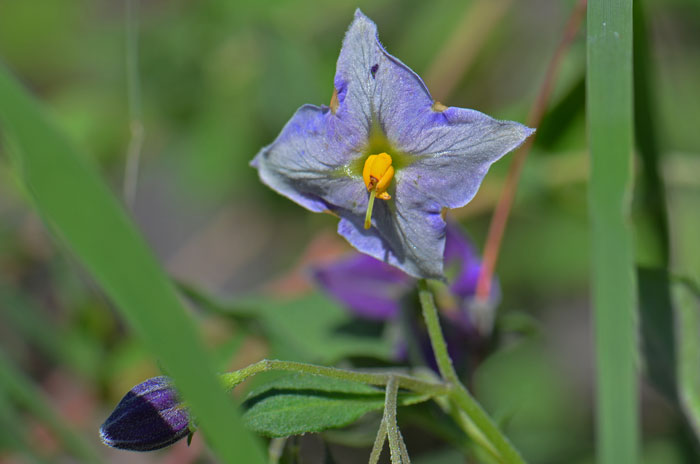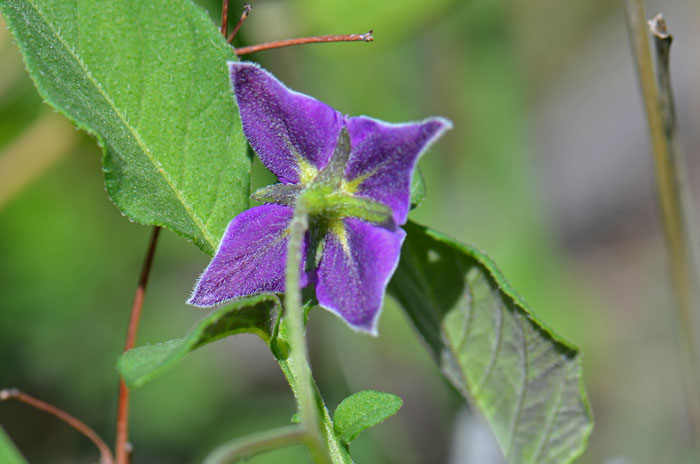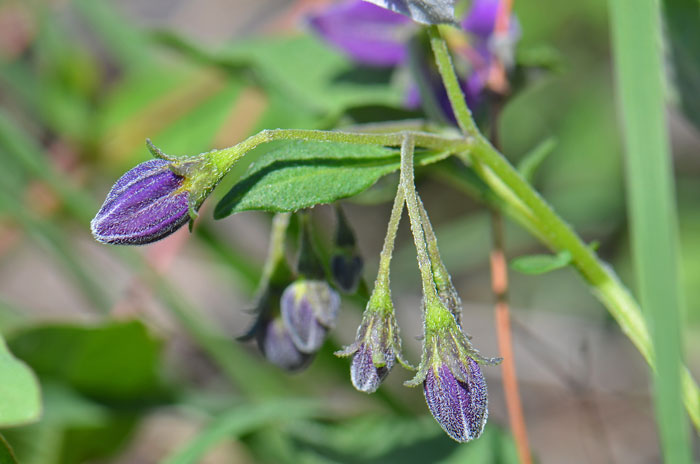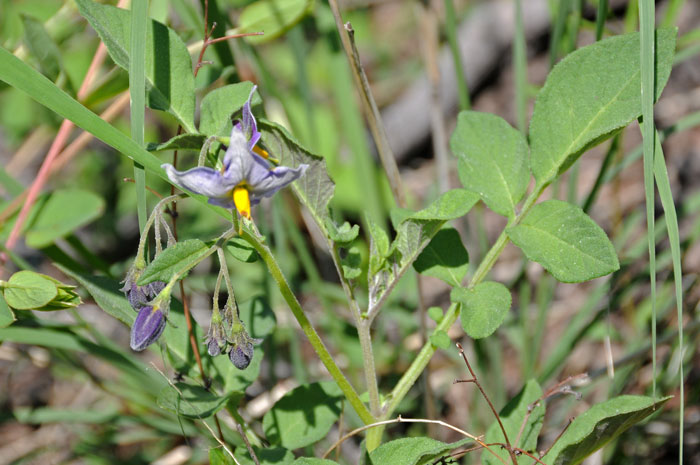Solanum fendleri, Fendler's Horsenettle




Scientific Name: Solanum fendleri
Common Name: Fendler's Horsenettle
Also Called: Fendler Horsenettle, Wild Potato
Family: Solanaceae, Nightshade or Potato Family
Synonyms: (Solanum stoloniferum, Solanum fendleri var. fendleri)
Status: Native
Duration: Perennial
Size: Up to 6 inches or more (20").
Growth Form: Forb/herb;
Leaves: Green; alternate, pinnately compound; leaflets may be purplish beneath (abaxial).
Flower Color: White to purple; inflorescence racemose or paniculate; flowers actinomorphic.
Flowering Season: July to August (late July to early October).
Elevation: 6,500 to 9,000 feet.
Habitat Preferences: Rich soil in open pine forests.
Recorded Range: Solanum fendleri is relatively rare in the United States where it is found in AZ, NM, TX. It is also native to Baja California and Mexico. In Arizona it is found in the eastern and southern parts of the state and in Gila County. In New Mexico it is found in the southwest quadrant. Few or no species in Texas. Texas species are represented by Solanum fendleri var. texense, Texan Horsenettle.
North America & US County Distribution Map for Solanum fendleri.
U.S. Weed Information: No information available.
Invasive/Noxious Weed Information: No information available.
Wetland Indicator: No information available.
Threatened/Endangered Information: No information available.
In the Southwestern United States, Arizona there are 18 species of Solanum, in California there are 30 species, Nevada has 8 species, New Mexico has 16 species, Texas has 27 species, Utah has 11 species. All data is approximate and subject to taxonomic changes.
There are 2 varieties in Solanum fendleri;
Solanum fendleri var. fendleri, Fendler's Horsenettle (AZ, NM, TX);
Solanum fendleri var. texense, Texan Horsenettle (TX).
Comments: In Southwest Desert Flora also see: American Black Nightshade, Solanum americanum, Silverleaf Nightshade, Solanum elaeagnifolium, Melon Leaf Nightshade, Solanum heterodoxum, Hinds Nightshade, Solanum hindsianum, Buffalobur Nightshade, Solanum rostratum and Purple Nightshade, Solanum xanti.
Solanum fendleri has been used for food and for building materials by southwestern indigenous peoples.
Apache, Chiricahua & Mescalero Food, Bread & Cake, Plant dried, stored, ground into flour and used to make bread.
Apache, White Mountain Fiber, Building Material, Used for thatching.
Keresan Food, Starvation Food, Raw potatoes mixed with clay or boiled with clay and eaten only in times of extreme scarcity.
Navajo Drug, Carminative, Raw tubers taken for gastric distress from hyperacidity.
Sia Food, Vegetable, Potatoes eaten raw or cooked with clay to counteract the astringency.
Zuni Food, Unspecified, Raw tubers used for food. After every mouthful of potato, a bite of white clay was taken to counteract the unpleasant astringent effect of the potato in the mouth.
See ethno-botanical uses at Native American Ethnobotany, University of Michigan, Dearborn.

